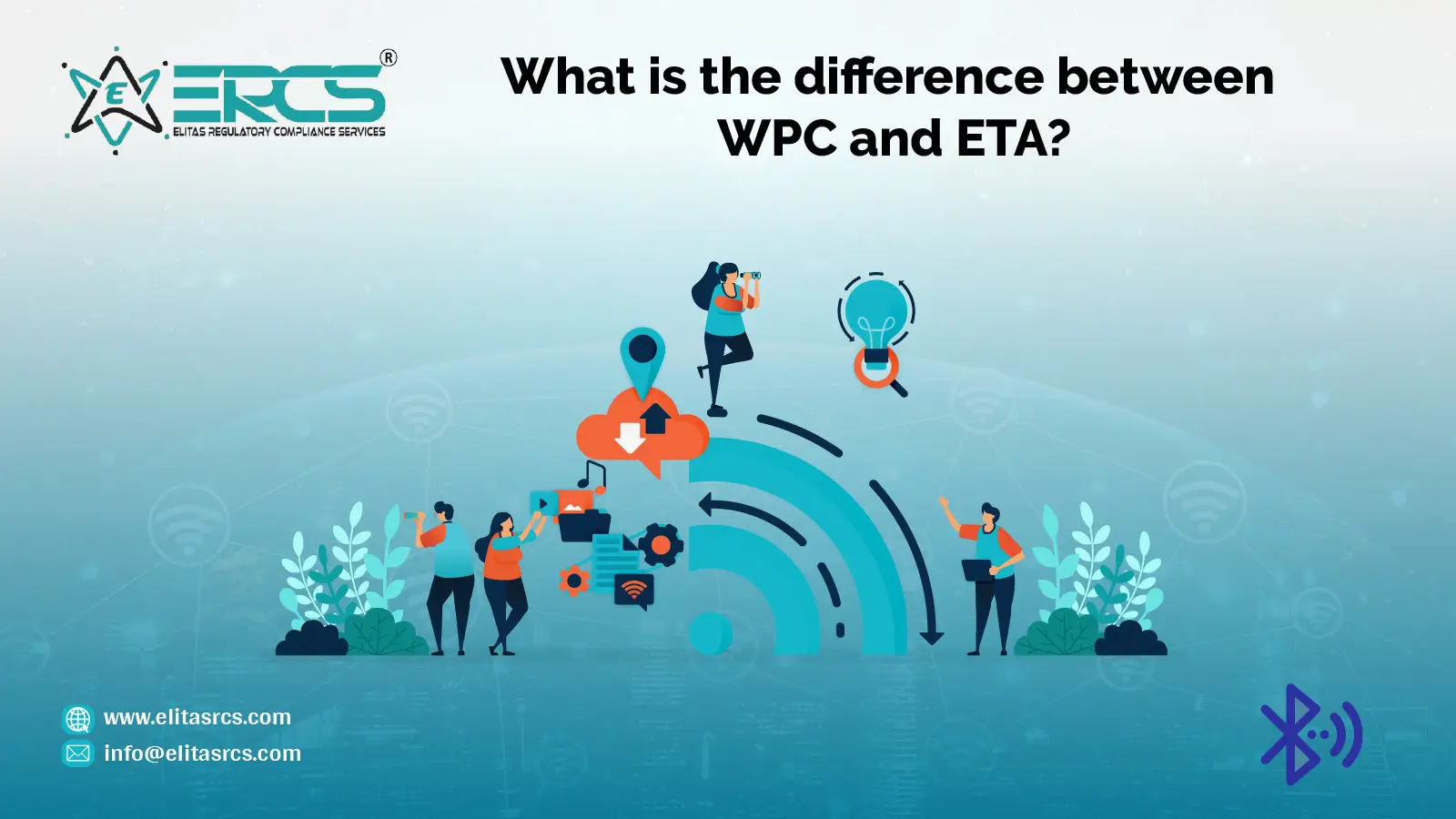- Home
- About
-
Services
-
BIS (Bureau of Indian Standards)
- ISI/BIS Certification (ISI Mark) – Indian Manufacturers
- BIS (CRS) Registration – Scheme II
- BIS (ISI) Certification for Foreign Manufacturers
- BIS (ISI) Certification for Steel
- BIS (ISI) Certification for Chemicals
- BIS Certificate of Conformity (CoC)
- BIS Scheme-X Certification
- BIS Certification for Import
Waste Management CompliancesOther Regulatory Compliances
-
- Mandatory Products
- Updates
- Contact
What is the difference between WPC and ETA?
- 26 Sep, 2024
- WPC Approval (ETA)

In an era of flaunting wireless products, are you a little perplexed by the two distinct certifications you recently came across? Fear not! You will gain a thorough understanding of the difference between WPC Certification and ETA Approval by reading this article, which will explicitly cover every facet of the former. These certifications are conferred on particular products so that the buyers will be assured of their reliability and safety.
What is WPC Certification?
It is authorized to issue WPC certifications based on the Indian Ministry of Communications. This is what creates a strategic difference between the wireless equipment and devices from the one that will be imported, manufactured, or used by persons and firms alike operating in the unlicensed frequency bands, which include Bluetooth and WiFi. Equipment that has passed the WPC certification process can be trusted to adhere to Indian wireless standards and not interfere with authorized communication systems.
What is an ETA Approval?
An Equipment Type Approval is an important clearance from the DoT's Department of Telecommunications, India's government, through the Wireless Planning and Coordination wing. The specific technology for devices like Wi-Fi and Bluetooth using de-licensed frequency bands requires proper conjugation with Indian technical standards. It ensures that the equipment approved complies with regulations and hence can be imported and sold into India, thus avoiding harmful interference and ensuring safe usage.
Difference between WPC and ETA Certifications
Here is a table representing the key differences between WPC Certification and ETA Approval. It’s helpful to understand why WPC is required and its essential role:
|
Aspect |
WPC (Wireless Planning and Coordination) |
ETA (Equipment Type Approval) |
|
Definition |
Government authority is responsible for frequency spectrum management. |
Certification issued by WPC for wireless equipment operating in de-licensed frequency bands. |
|
Role |
Regulates and allocates radio frequencies; issues licenses for wireless operations. |
Ensures that wireless devices meet regulatory standards and operate within approved parameters. |
|
Scope |
All wireless communications and frequency management in India, including licensing. |
Specific to equipment using licensed frequency bands like Wi-Fi, Bluetooth, etc. |
|
Responsibilities |
Allocation and assignment of radio frequencies. Issuance of licenses (e.g., amateur radio, satellite communication). Regulation and monitoring of frequency usage. |
Certification of devices operating in delicensed bands. Verification of compliance with technical standards. |
|
Applicable to |
All wireless devices require a license for frequency use in India. |
Devices like Wi-Fi routers, Bluetooth devices, IoT equipment, etc., operate in de-licensed bands. |
|
Process |
Application for frequency allocation. Issuance of license after evaluation. |
Submission of equipment details and compliance documents. Certification is granted if standards are met. |
|
Examples of Licensed Devices |
Radio stations, satellite communications, two-way radios. |
Wi-Fi routers, Bluetooth headsets, and smart home devices. |
|
Authority |
Department of Telecommunications (DoT), Government of India. |
Certification issued under the authority of WPC. |
|
Focus |
Licensing and spectrum management for all wireless communications. |
Approval of equipment for use in unlicensed frequency bands. |
Why is a WPC and ETA license required?
A WPC or ETA license both serve as a reliability benchmark. If the product is certified by this license the consumers tend to trust the product more. Based on this certification, manufacturers, importers, and legitimate sellers of wireless communication goods in India are authorized. It grants formal approval so that these types of companies can enter the Indian market and deliver services to clients outside of legal disputes. The WPC certification also guarantees that devices adhere to all technical specifications and frequency ranges specified by the Indian government to comply with regulatory requirements. This is a criterion that all manufacturers and importers who trade legally within the nation of India must meet.
Conclusion
In a nutshell, WPC and ETA are two important regulatory frameworks put in place for the governance of wireless devices in India. Their objectives, however, differ. WPC is an overall regulation on the management and licensing of radio frequencies to all kinds of wireless equipment so as not to interfere with licensed communication systems. It applies widely to kinds of equipment that need a special license for usage in frequency, including radio stations and satellite communications.
The ETA certification is more particularly for devices working on de-licensed frequency bands such as Wi-Fi and Bluetooth. This will ensure that these products are by Indian standards and can be lawfully imported, sold, and used without harmful interference. Therefore, knowing their differences would ensure the product selection of consumers and businesses is by Indian regulations and would also ensure safe and reliable use.
Share:
Blog Categories
Latest Blogs
-
-

-

28 Mar, 2025 How To Use the BIS Care App & Its Features?
-

-

24 Mar, 2025 What Are The Documents Required Under BIS Scheme X?
Need Expert Advice?
Feel Free to Connect with Us
Prompt reply within hours
Continued support
To give you the best compliance services in India, experienced BIS certification consultants at ERCS are ready to assist you at every stage of certification. Find out everything you need to know about the compliance your product requires to get into the Indian market and develop a trusted customer base.

